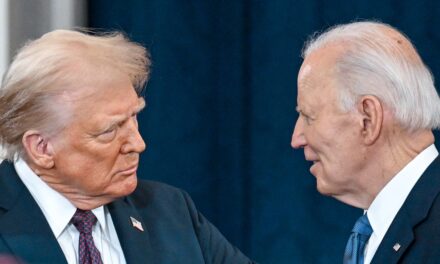In a recent study that has sparked considerable debate, researchers have concluded that a number of major news outlets in the United States effectively acted as “megaphones” for Hamas during the latest conflict in Gaza. This assertion highlights a critical examination of media narratives and their implications on public perception regarding the ongoing humanitarian crisis in the region.
The conflict, which escalated in October 2023, was marked by intense violence and significant loss of life, prompting extensive media coverage. However, the study’s findings suggest that American media coverage may have disproportionately amplified the narratives propagated by Hamas, a designated terrorist organization by numerous countries including the United States.
Researchers have pointed out that the manner in which many media outlets reported on the events contributed to a one-sided portrayal that may have overlooked critical context regarding the ongoing Israeli-Palestinian conflict. This has led to accusations that such outlets prioritize sensationalism and emotional responses over balanced reporting of the facts on the ground.
The investigation focused on several prominent news networks and print publications, analyzing their content before, during, and after the major unrest that initiated with the surprise attack by Hamas on October 7. Reports indicate that a substantial portion of the media coverage heavily favored narratives that framed Hamas as victims in the conflict, potentially swaying public opinion toward a more sympathetic view of the organization.
One of the pivotal elements of this study was the analysis of social media and its role in shaping mainstream narratives. As social media platforms have become a primary source of news for many individuals, the propagation of information, often unverified or misleading, has raised concerns about its impact on traditional journalism. Researchers found that many outlets sourced their information from social media posts, which often included statements from Hamas, further legitimizing their narrative without adequately scrutinizing the context or motivations behind those statements.
Critics of the study argue that journalism must seek to convey the voices of all parties involved in conflict, especially given the humanitarian crisis affecting civilians in Gaza. They contend that simply labeling the media as a “megaphone” for Hamas could detract from the broader story of civilian suffering and the complex dynamics of the Israel-Palestine situation. While recognizing the human rights abuses faced by civilians, the need for a balanced perspective is emphasized to understand the deeper political consequences of the conflict.
Defenders of the report emphasize the responsibility of news organizations to provide context in their reporting, especially regarding a group like Hamas, which is known for its violent tactics and anti-Israel rhetoric. By portraying such organizations in a way that does not account for their history or actions, media outlets risk fostering public misconceptions about the broader Israeli-Palestinian conflict.
The findings of this study come amid nationwide discussions regarding media bias and ethical journalism. With the rise of polarized views in society, the importance of objective journalism has never been more pronounced. Media credibility is often questioned during critical events when emotion runs high and public opinion can shift rapidly based on real-time reports.
Many news organizations are currently grappling with their roles in shaping narratives around contentious political issues. Some have begun to implement editorial guidelines aimed at ensuring a more balanced representation of all sides in a conflict. However, the challenge lies in maintaining these standards in the face of competing narratives that emerge rapidly, particularly in an age where digital media thrives on speed and accessibility.
Experts in media ethics argue that the responsibility of journalists goes beyond mere reporting; it extends to fostering an informed public. This involves ensuring the audience is aware of multiple perspectives and the historical context surrounding conflicts such as the one in Gaza. They assert that failing to do so only serves to deepen societal divides and perpetuate misunderstandings.
In light of the study, some journalists and scholars have called for a reevaluation of how news narratives are constructed during crises. As situations evolve, information changes and new voices rise to prominence, thus placing additional pressure on newsrooms to accurately reflect these dynamics. In doing so, it becomes paramount for news organizations to distinguish between reporting and advocacy, understanding how the two roles can sometimes conflict.
Furthermore, another aspect highlighted by the study involves the issue of accountability for misinformation. In an era where “fake news” is widely discussed, the accountability of media organizations in their reporting practices cannot be overstated. Journalists and media outlets must be willing to acknowledge and correct inaccuracies, particularly when these inaccuracies influence public sentiment on sensitive topics such as war and humanitarian crises.
This recent analysis presents a wake-up call for journalists and media outlets on the importance of moderation and critical assessment in reporting practices. As established platforms continue to wield significant influence over public perception, it is essential that they become more aware of the narratives they choose to elevate and the potential consequences of their reporting.
As the situation in Gaza continues to unfold, the need for responsible journalism becomes immensely critical. The challenge ahead lies in striking a balance between reporting conflicting narratives while ensuring that the truth is not compromised in the process. The very essence of journalistic integrity hangs in the balance, and it is a responsibility that cannot be taken lightly.
In summary, this controversial study raises essential questions regarding the responsibilities and practices of American news outlets when reporting on global conflicts. With the stakes remarkably high, especially when human lives are at risk, it has become increasingly vital for journalists to deliver accurate, contextual, and compassionate coverage that reflects the complexities inherent in the situations they report on.
For those engaged in media consumption, the study serves as a reminder to remain critically aware of the narratives being pushed by various outlets and to seek diverse perspectives when trying to understand intricate geopolitical conflicts. Only through a collective commitment to truth in journalism can society navigate the turbulent waters of information and misinformation alike.
































